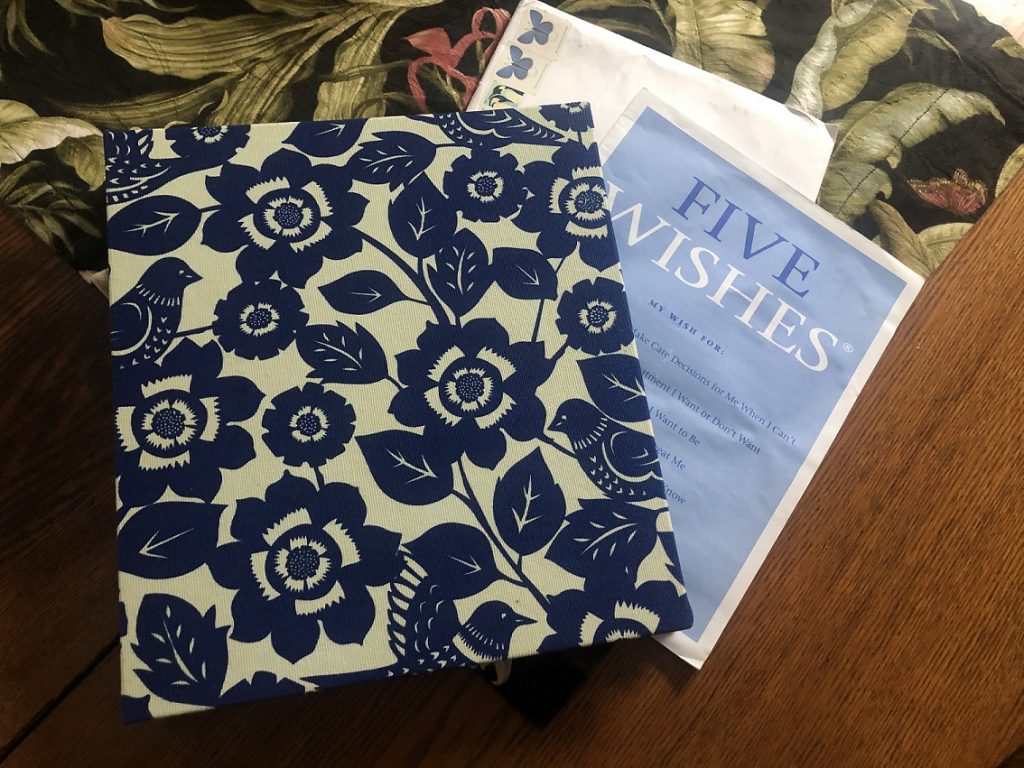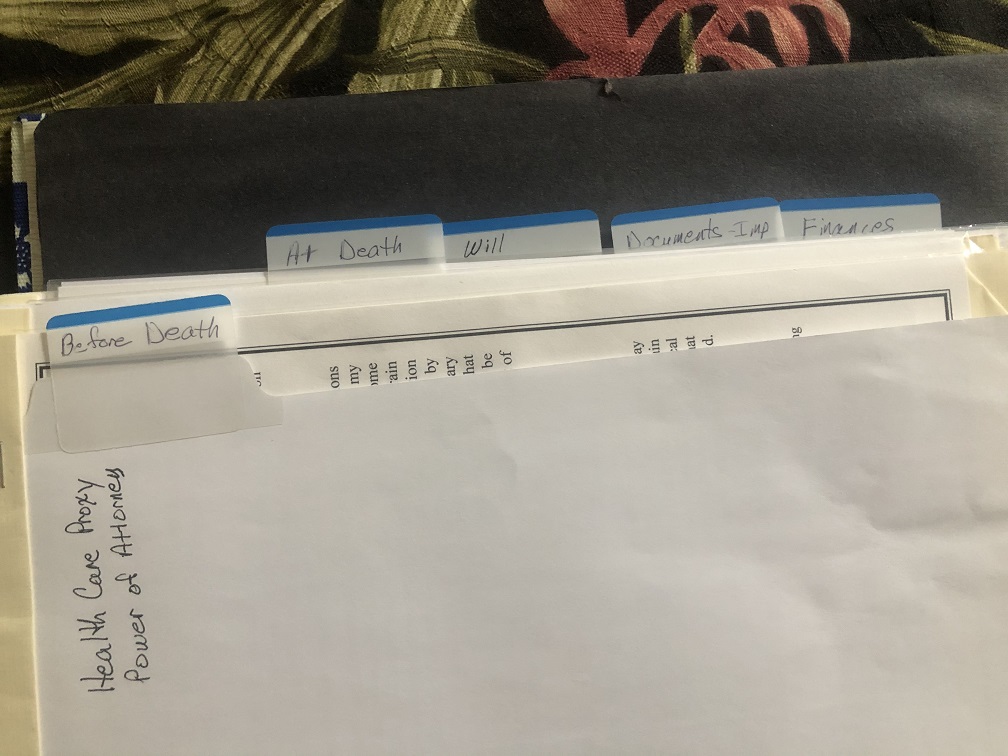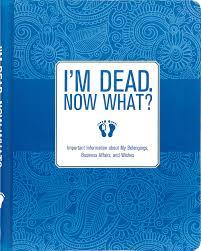What is a Death Binder?
A death binder is a place to gather necessary information and documents that detail how we want our wishes carried out, our belongings dispersed, our finances dealt with, etc.

Why make a death binder?
Reasons include:
- It’s a gift to our loved ones: reduces the stress for our families when confronted with difficult medical decisions or in the event of our death
- Provides a concrete plan for our family to follow; no surprises
- Provides the opportunity for family and friends to provide a loving presence at your bedside and emotional support for one another
- A gift to ourselves: a chance for us to review our lives and even make changes
- Provides the opportunity for us to have difficult conversation with our family, hopefully alleviating charged conversations later
- Provides the opportunity for family to become closer
STEP ONE – Set your Intention
Set the intention and ask your self the hard questions about your life and your choices.
- How do you imagine your end-of-life experience?
- What medical or life-sustaining care do you want?
- Who are the family and friends who will be most impacted by your death?
- What do you want your legacy to be?
STEP TWO – Gather your Documents
Gather important information and documents that we want to be readily available in case of natural disaster, medical emergency, or death.
Download our FINDING THE DOCUMENTS YOU NEED worksheet.
Here’s a start to your list:
- Medical Documents
- Bank account numbers, both checking and savings
- Insurance policies
- Investment account details
- Safe deposit box keys
- Social security card and other identification like birth certificates and passports
- Utility and other monthly billing information
- Mortgage, deed, or lease for your home or residence
- Vehicle title
- Internet account numbers and passwords, including subscriptions and email accounts
- Important phone numbers for family members, your lawyer, doctor, and financial planner, pastor or priest, and your preferred funeral home. ??
A document like “5 Wishes” can help you think about medical, emotional and spiritual questions, providing a structure for you to reflect on these issues and start the conversation with your health care proxy, other medical providers, and your family.
STEP THREE – Organize your Documents
Decide what would work best for you. You can put documents in a binder, file cabinet, or box. If you make your own so that you can customize it to be an expression of you and your values. Or you can purchase one on the internet or at a local book store.
Poke around and see what makes the most sense for you!


STEP FOUR – Have the Conversations
The next step is to talk to your loved ones and let them know what you are doing and why it’s important.
Although end-of-life planning is critical for adults at every age, it can be difficult to find a way to introduce the topic of conversation to your loved ones.
Possible conversation starters:
- There’s been something on my mind and now is a good time to bring it up
- You can count on me to be there for you
- I want to do the right things for you when you need them the most
- I don’t know your wishes so please tell me them so I can honor them whether I agree with them or not
- You matter to me and I care about you
Remember, a Death Binder is a living document and should be updated regularly. We live in a death phobic culture and it can be difficult to prioritize getting our affairs in order, it is a gift to yourself and your loved ones.
Please don’t hesitate to reach out if you have any questions. Email us or call 607-272-0212.